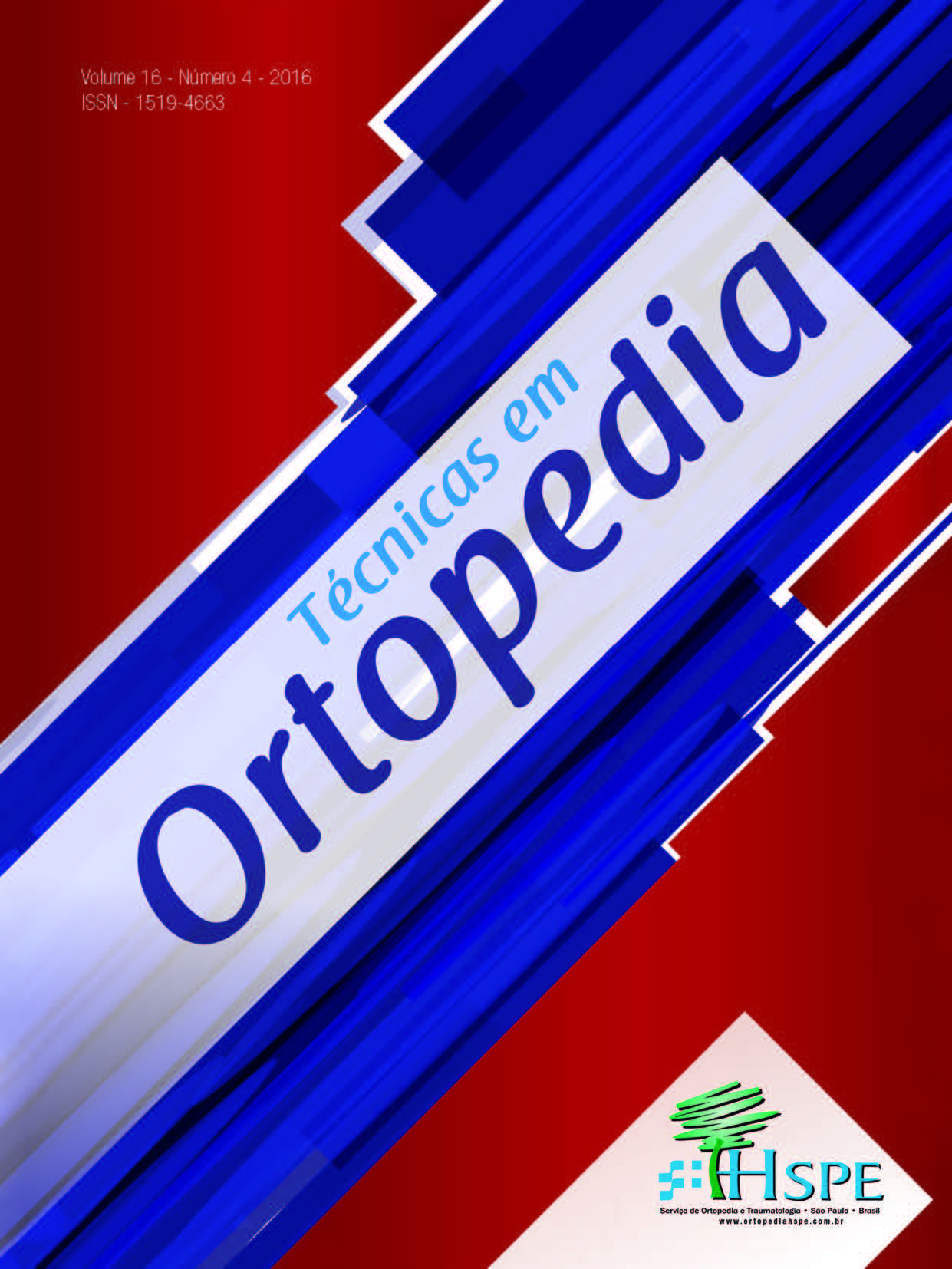Tratamento ortótico após diagnóstico precoce de tíbia vara de Blount infantil
Keywords:
Blount Disease, Tibia Vara, Conservative treatment, Orthotic devicesAbstract
Blount disease is a pathology of development, characterized by involvement of the proximal medial tibial physis. The child presents clinicaly with varus and internal rotation of the lower limb. Two distinct clinical forms have been recognized: infantile and adolescent. A third form, which was called juvenile Blount disease is recognized by Thompson. It is usually noted shortly after the child have begun walking and frequently confused with physiologic genu varum. The difference is genu varum does not need treatment and Blount disease does. Type 1 or 2 of Langenskiöld are the best to conservative treatment with KAFO brace. A boy with infantile Blount disease is reported, he was underwent nonsurgical management with brace to correct the deformities.
Downloads
References
Luzo MCM, Montenegro NB, Massa BSF, De Angeli LRA, Cordeiro FG, Guarniero R. Management of infantile Blount disease with molded orthoses: a new perspective. Acta Ortop
Bras. 2016;24(2):85-9.
Inaba Y, Saito T, Takamura K. J Orthop Sci. Multicenter study of Blount disease in Japan by the Japanese Pediatric Orthopaedic Association. 2014 Jan;19(1):132-40.
Birch JG. Blount disease. J Am Acad Orthop Surg. 2013 Jul; 21(7):408-18.
Zionts LE, Shean CJ. Brace treatment of early infantile tibia vara. J Pediatr Orthop. 1998 Jan-Feb;18(1):102-9.
Richards BS, Katz DE, Sims JB. Effectiveness of brace treatment in early infantile Blount’s disease. J Pediatr Orthop. 1998 May-Jun; 18(3):374-80.
Raney EM, Topoleski TA, Yaghoubian R, Guidera KJ, Marshall JG. Orthotic treatment of infantile tibia vara. J Pediatr Orthop. 1998;18(5):670–74.
Güven A, Hancılı S, Kuru L. Obesity and increasing rate of infantile Blount disease. Clin Pediatr (Phila). 2014 Jun;53(6):539-43.
Scott AC, Kelly CH, Sullivan E. Body mass index as a prognostic factor in development of infantile Blount disease. J Pediatr Orthop. 2007 Dec;27(8):921-5.
Paley D, Bhave A, Herzenberg JE, Bowen JR. Multiplier method for predicting limb-length discrepancy. J Bone Joint Surg Am. 2000 Oct;82-A(10):1432-46.
Shinohara Y, Kamegaya M, Kuniyoshi K, Moriya H. Natural history of infantile tibia vara. J Bone Joint Surg Br. 2002 Mar;84(2):263-8.





